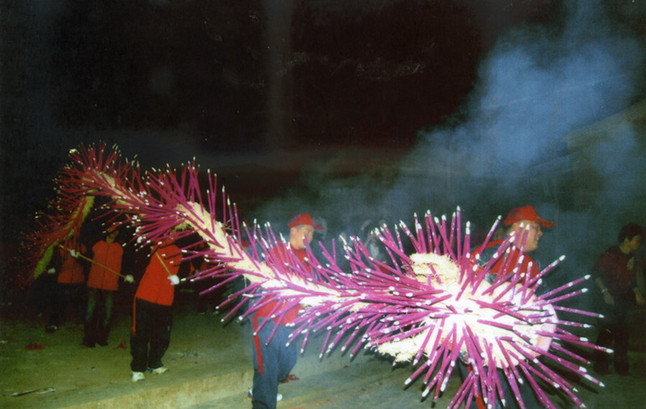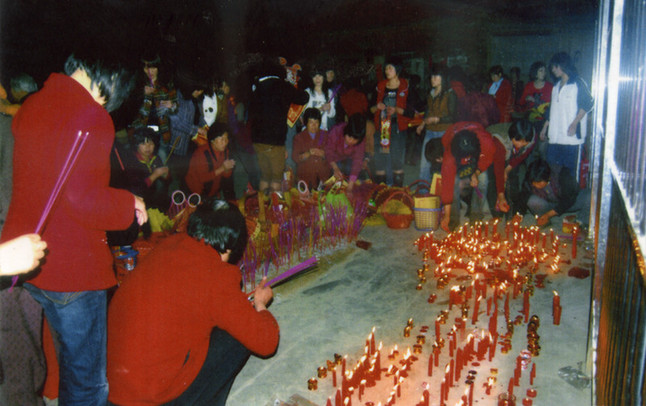
People can see the Dragon Dance in all towns around Jinjiang as a procession or celebration of the Lantern Festival or on other important occcasions. The Lion Dance is also very popular there.
If there is a ceremony or a procession, there is always a Lion Dance and Dragon Dance, but the two are quite different. The main part of the former is the martial arts skills which give it power, while the latter appears to be gentler and more graceful but is a combination of dance and martial arts. They are equally popular. There used to be Dragon Dance teams for ceremonies in the towns around Jinjiang, such as Anhai, Shishi, Yongning, Shenhu, Yakou and Jinjing.

Before liberation, when the Guanyin in the Longshan Temple went to Nanhai Putuo, in Zhejiang, there were several Dragon Dance and Lion Dance teams in the parade. People go to burn incense and ask for a blessing or worship their ancestors in famous temples, such as Huanggong in Shishi, Jianggong liuxingfu at Baisha, and Nanshagang zhenhaigong at Jinjing and many kinds of dragons and “cloth dragons”, with a head made of thin bamboo strip, can be seen. The dragon’s mouth can open and close freely with a scarlet tongue. It has very big eyes and horns and the dancer can dance with it using a wooden handle inside. The body is a hollow cylinder made of bamboo strips and wire with the wooden handle in its mid-section. The body has more than 10 sections, the last one of which goes up for the tail. The body is wrapped in thick cloth painted with dragon scales. This is the “cloth dragon”. Candles can be placed in it and lit up at night and it becomes a “fire dragon”.
These days, small bulbs with a battery are used and the eyes are high-intensity bulbs, which make the “fire dragon” very modern and attractive. There is another type of dragon the “Baiye dragon” with every section of the body like a butterfly giving the whole body a very strange appearance. And, the “Incense dragon”, which is very special, with lots of lit incense and a fragrant smell when it dances at night, like a “Fire dragon”. It also involves a complicated process, so the “Incense dragon” is seldom seen in performances. Sometimes, given the proper amount of time for preparation, a “Wood dragon” can be made out of more than 10 wooden stools with a head and a tail. Or there is the “Straw dragon” made out of straw. in the term “Performance” was commonly used during the Tang Dynasty, for example, Shijiu Performance or Miaoze Performance so the people of Jinjiang got used to the term “Dragon Dance Performance” instead of just “Dragon Dance”.